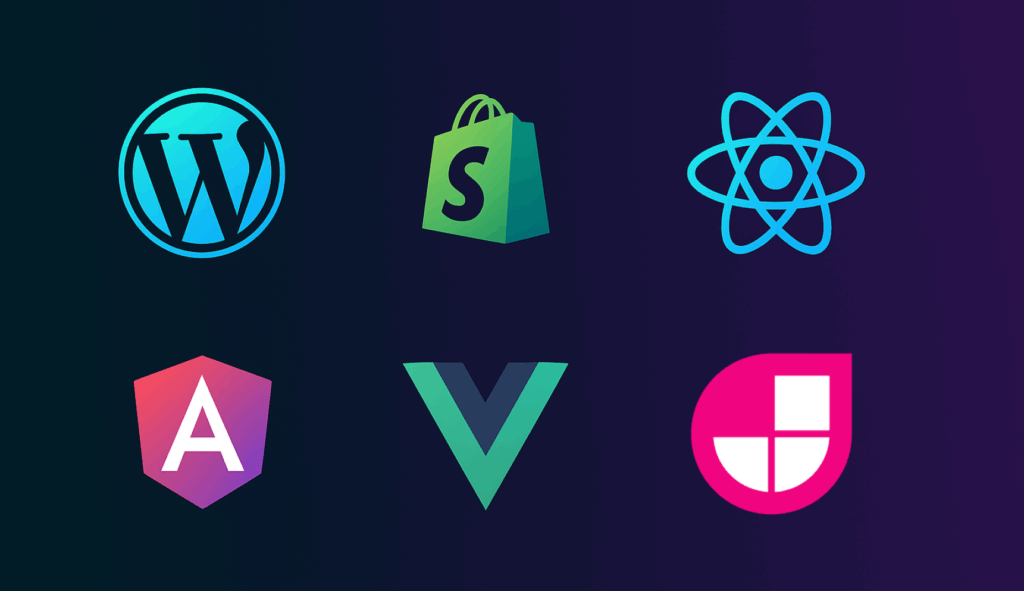Website page speed is a universal concern, but the specific optimization techniques you use often depend on the platform or framework your website is built on. A WordPress site has different optimization needs than a Shopify store, and a React application requires different strategies than a static site built with a Jamstack approach. Optimizing for page speed means understanding the nuances of your chosen technology.
This guide provides an overview of page speed optimization for various popular platforms and frameworks, offering tailored advice and linking to detailed guides for each. We’ll cover the unique challenges and opportunities presented by each technology, helping you achieve optimal performance regardless of your chosen stack. It’s about working with your platform’s strengths and mitigating its potential weaknesses.

The Platform/Framework Matters
While many general page speed optimization principles apply universally (image optimization, minification, caching, CDNs, etc.), the implementation details and the specific bottlenecks often differ significantly depending on the platform or framework you’re using. For instance, a WordPress site might be heavily reliant on plugins, while a React application might have challenges with large JavaScript bundles. Choosing the right tools and techniques for your specific setup is key.
Understanding the specific performance characteristics and potential pitfalls of your chosen platform/framework is essential for effective optimization.
Headless CMS and Page Speed
Headless CMS architectures, where the backend content management system is decoupled from the frontend presentation layer, offer significant flexibility and potential performance advantages. Instead of a single, monolithic system, you have a content repository that delivers data via APIs, and a separate frontend that consumes that data. However, realizing these performance benefits requires careful planning and implementation.
This section delves into the world of headless CMS, exploring its impact on page speed and outlining strategies for building fast, decoupled architectures. We’ll examine how this approach differs from traditional CMS setups and highlight the key areas to focus on for optimal performance, such as choosing the right frontend technology and optimizing API calls.
Check it out here: Headless CMS Page Speed Optimization (SSG)
Jamstack Website Optimization
Jamstack (JavaScript, APIs, and Markup) is a modern web development architecture that emphasizes performance, security, and scalability. By pre-rendering pages into static HTML files and serving them directly from a CDN, Jamstack sites are often inherently faster than traditional, server-rendered websites. However, even with this built-in speed advantage, there are still many opportunities for optimization.
This section explores the Jamstack approach to web development and outlines specific optimization techniques for building blazing-fast Jamstack websites. We’ll cover the core principles of Jamstack, including the use of static site generators and APIs, and how to leverage its inherent performance advantages to the fullest.
Check it out here: Jamstack Website optimization
Optimizing Page Speed on Ecommerce Platforms
E-commerce websites have unique performance challenges due to their large product catalogs, numerous images, and often complex functionality (shopping carts, checkout processes, user accounts, etc.). For online stores, page speed is directly tied to conversion rates and revenue, making optimization absolutely critical.
This section focuses on the specific challenges and best practices for optimizing page speed on e commerce platforms. We’ll cover general principles that apply to all e-commerce sites, as well as platform specific tips for popular solutions like Shopify, WooCommerce, and Magento.
Check it out here: ECommerce Page Speed Optimization (Woo, Shopify, Magento)
React, Angular, and Vue.js: Performance Optimization for JavaScript Frameworks
Modern JavaScript frameworks like React, Angular, and Vue.js enable the creation of dynamic and interactive web applications. However, these frameworks can also introduce performance challenges if not used carefully. Issues like large bundle sizes, inefficient rendering, and unnecessary re-renders can lead to sluggish performance.
This section focuses on the specific performance considerations and optimization techniques for each of these popular frameworks. We’ll cover both general JavaScript optimization principles and framework specific strategies for minimizing bundle sizes, optimizing rendering, and ensuring smooth user interactions.
Check it out here: React, Angular and Vue.js Performance Optimization
Shopify Page Speed Optimization
Shopify is a popular hosted e-commerce platform that simplifies the process of setting up and managing an online store. While Shopify handles much of the underlying infrastructure, store owners still have significant control over their store’s performance. Optimizing a Shopify store involves careful theme selection, app management, and code optimization.
This section provides specific strategies for optimizing Shopify store performance, focusing on the areas where store owners have the most control. We’ll cover choosing a fast theme, managing apps effectively, and optimizing Shopify’s Liquid templating language.
Check it out here: Shopify Page Speed Optimization (Theme, Liquid, Tuning)
WordPress Page Speed Optimization
WordPress is the most popular CMS in the world, known for its flexibility and ease of use. However, WordPress websites can become slow and bloated if not optimized properly. A combination of careful plugin and theme selection, along with best-practice optimization techniques, is key to a fast WordPress site.
This section outlines a comprehensive approach to WordPress page speed optimization, covering key areas like hosting, theme selection, plugin management, caching, and database optimization. We’ll provide actionable advice and specific plugin recommendations to help you achieve a fast and efficient WordPress website.
Check it out here: WordPress Page Speed Optimization – Themes & Hosting
Conclusion: Tailoring Optimization to Your Stack
Website page speed optimization is not a one-size-fits-all solution. The best approach depends on the specific platform or framework you’re using. By understanding the unique performance characteristics of your chosen technology and applying the tailored optimization techniques outlined in this guide and its linked articles, you can create a fast, efficient, and user-friendly website that delivers an exceptional experience. Remember to always monitor your performance, test your changes, and iterate based on your results. The key is to be proactive, informed, and constantly striving for improvement.
